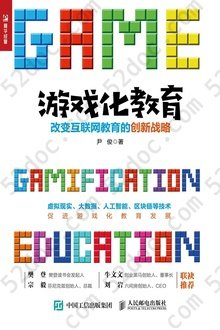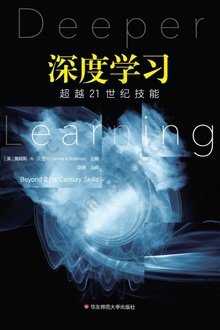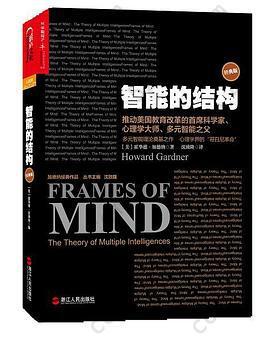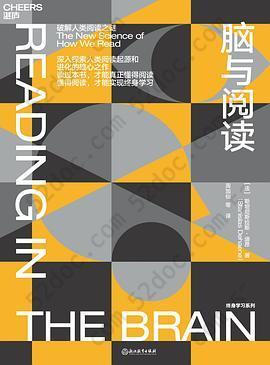注重体验与质量的电子书资源下载网站
分类于: 其它 互联网
简介
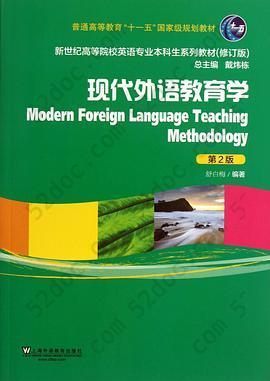
现代外语教育学 豆 0.0分
资源最后更新于 2020-10-22 16:11:54
作者:舒白梅
出版社:上海外语教育出版社
出版日期:2013-01
ISBN:9787544631983
文件格式: pdf
简介· · · · · ·
《普通高等教育"十一五"国家级规划教材•新世纪高等院校英语专业本科生教材:现代外语教育学(第2版)(修订版)》注重反映外语教学的综合化、多元化趋势,反映各种语言观与学习理论影响下的教学方法,不着重强调哪一家,避免外语教学观念上的教条主义。专业技能、专业知识、相关专业知识的完美匹配,帮助学生打下扎实的语言基本功,增强其分析问题、解决问题的能力,提高专业素质和人文素养,使学生真正成为国际化、创新型、高素质的英语专业人才。
目录
CHAPTER 1 INTRODUCTION 1
1.1 Reasons for Studying Foreign Language Teaching Methodology 1
1.2 Understanding Foreign Language Teaching Methodology 2
1.3 Disciplines Contributing to Foreign Language Teaching (FLT) 5
1.4 Factors Influencing Foreign Language Teaching and Learning 6
1.5 Summary 9
1.6 Questions and Tasks 10
CHAPTER 2 ASPECTS OF FOREIGN I.ANGUAGE TEACHING 12
2.1 Views of Language and Foreign Language Teaching 12
2.2 Foreign Language Teaching Syllabus 16
2.3 Principles of Foreign Language Teaching 22
2.4 Aims and Objectives of Foreign Language Teaching and Learning 24
2.5 Summary 28
2.6 Questions and Tasks 28
CHAPTER 3 ASPECTS OF FOREIGN LANGUAGE LEARNING 30
3.1 Behaviorism versus Mentalism 30
3.2 The Monitor Model of Second Language Development 34
3.3 From Theory to Practice 37
3.4 Language Learning Strategies 38
3.5 Factors Contributing to Foreign Language Learning 43
3.6 Summary 48
3.7 Questions and Tasks 49
CHAPTER 4 THE TEACHING AND LEARNING OF PRONUNCIATION 50
4.1 General Knowledge of the Sound System 50
4.2 Principles of Teaching and Learning Pronunciation 55
4.3 Techniques for Teaching Pronunciation 56
4.4 Basic Issues in Pronunciation Teaching 62
4.5 Summary 64
4.6 Questions and Tasks 65
CHAPTER 5 THE TEACHING AND LEARNING OF VOCABUI.ARY 66
5.1 General Knowledge of Vocabulary 66
5.2 Principles of Teaching and Learning Vocabulary 72
5.3 Techniques for Teaching Vocabulary 74
5.4 Basic Issues in Teaching Vocabulary 80
5.5 Summary 81
5.6 Questions and Tasks 82
CHAPTER 6 THE TEACHING AND LEARNING OF GRAMMAR 84
6.1 General Knowledge of Grammar 84
6.2 Approaches to the Teaching and Learning of Grammar 85
6.3 Principles of Teaching and Learning Grammar 90
6.4 Techniques for Teaching Grammar 91
6.5 Basic Issues in Teaching Grammar 98
6.6 Summary 98
6.7 Questions and Tasks 99
CHAPTER 7 THE TEACHING AND LEARNING OF DISCOURSE 101
7.1 General Knowledge of Discourse 101
7.2 Approaches to the Development of Discourse Skills 106
7.3 Principles of Teaching and Learning Discourse 107
7.4 Techniques for Teaching Discourse 107
7.5 Basic Issues in Teaching Discourse 112
7.6 Summary 113
7.7 Questions and Tasks 113
CHAPTER 8 THE TEACHING AND LEARNING OF LISTENING 116
8.1 The Nature of Listening Comprehension 116
8.2 Native Speaker Listening and Listening to a Foreign Language 121
8.3 Principles of Teaching and Learning Listening 124
8.4 Techniques for Teaching Listening 128
8.5 Points to Consider in Teaching Listening 132
8.6 Summary 133
8.7 Questions and Tasks 134
CHAPTER 9 THE TEACHING AND LEARNING OF READING 135
9.1 The Nature of Reading Comprehension 135
9.2 Factors and Their Implications for Reading in an L2 137
9.3 Principles of Teaching and Learning Reading 140
9.4 Techniques for Teaching Reading 146
9.5 Points to Consider in Teaching Reading 150
9.6 Summary 152
9.7 Questions and Tasks 153
CHAPTER 10 THE TEACHING AND LEARNING OF SPEAKING 155
10.1 The Nature of Oral Interaction 155
10.2 Two Major Approaches to the Teaching of Speaking 159
10.3 Principles of Teaching and Learning Speaking 161
10.4 Techniques for Teaching Speaking 163
10.5 Points to Consider in Teaching Speaking 173
10.6 Summary 174
10.7 Questions and Tasks 175
CHAPTER 11 THE TEACHING AND LEARNING OF WRITING 176
11.1 The Nature of Writing 176
11.2 Approaches to the Teaching of Writing 179
11.3 Principles of Teaching and Learning Writing 182
11.4 Techniques for Teaching Writing 188
11.5 Points to Consider in Teaching Writing 191
11.6 Summary 194
11.7 Questions and Tasks 195
CHAPTER 12 CLASSROOM COMMUNICATION AND MANAGEMENT 196
12.1 Communication in the Classroom 196
12.2 Dimensions of Classroom Management 199
12.3 Effective Classroom Instruction 205
12.4 Cooperative Learning 210
12.5 Summary 215
12.6 Questions and Tasks 215
CHAPTER 13 USING TECHNOLOGY FOR LANGUAGE INSTRUCTION 217
13.1 Defining Educational Technology 217
13.2 Principles of Using Media in the Classroom 218
13.3 An Overview of Classroom Media 219
13.4 Traditional Ways of Using Technology for Language Instruction 221
13.5 Using CALL to Enhance Language Learning 226
13.6 Other Uses of Computers 229
13.7 Summary 234
13.8 Questions and Tasks 235
CHAPTER 14 ASSESSING AND EVALUATING TEACHING AND LEARNING 237
14.1 Basic Knowledge of Assessment 237
14.2 Principles of Test Design 246
14.3 Alternative Assessment 252
14.4 Summary 257
14.5 Questions and Tasks 257
CHAPTER 15 ERROR ANALYSIS AND REMEDIAL WORK 259
15.1 Purposes in Error Analysis 259
15.2 Theories of Error Analysis 259
15.3 Prerequisites for Error Analysis 262
15.4 Procedures of Error Analysis 264
15.5 Error Correction 266
15.6 Summary 272
15.7 Questions and Tasks 272
CHAPTER 16 A SURVEY OF FLTAPPROACHES 274
16.1 The Traditional Method School 274
16.2 The Humanistic/Psychological School 280
16.3 Communicative Language Teaching 283
16.4 New Attempts within a CLT Framework 287
16.5 Summary 291
16.6 Questions and Tasks 292
CHAPTER 17 FOREIGN LANGUAGE TEACHING IN CHINA 293
17.1 Historical Review 293
17.2 Looking Ahead 303
17.3 Summary 306
17.4 Questions and Tasks 307
CHAPTER 18 TEACHERS’ PROFESSIONAL DEVELOPMENT 308
18.1 Changing Views and Central Factors 308
18.2 Major Professional Goals and Tasks 310
18.3 The Reflective Model of Teacher Development 314
18.4 Class Observation 317
18.5 Lesson Planning 319
18.6 Summary 327
18.7 Questions and Tasks 327
POSTSCRIPT 329
BIBLIOGRAPHY 332
1.1 Reasons for Studying Foreign Language Teaching Methodology 1
1.2 Understanding Foreign Language Teaching Methodology 2
1.3 Disciplines Contributing to Foreign Language Teaching (FLT) 5
1.4 Factors Influencing Foreign Language Teaching and Learning 6
1.5 Summary 9
1.6 Questions and Tasks 10
CHAPTER 2 ASPECTS OF FOREIGN I.ANGUAGE TEACHING 12
2.1 Views of Language and Foreign Language Teaching 12
2.2 Foreign Language Teaching Syllabus 16
2.3 Principles of Foreign Language Teaching 22
2.4 Aims and Objectives of Foreign Language Teaching and Learning 24
2.5 Summary 28
2.6 Questions and Tasks 28
CHAPTER 3 ASPECTS OF FOREIGN LANGUAGE LEARNING 30
3.1 Behaviorism versus Mentalism 30
3.2 The Monitor Model of Second Language Development 34
3.3 From Theory to Practice 37
3.4 Language Learning Strategies 38
3.5 Factors Contributing to Foreign Language Learning 43
3.6 Summary 48
3.7 Questions and Tasks 49
CHAPTER 4 THE TEACHING AND LEARNING OF PRONUNCIATION 50
4.1 General Knowledge of the Sound System 50
4.2 Principles of Teaching and Learning Pronunciation 55
4.3 Techniques for Teaching Pronunciation 56
4.4 Basic Issues in Pronunciation Teaching 62
4.5 Summary 64
4.6 Questions and Tasks 65
CHAPTER 5 THE TEACHING AND LEARNING OF VOCABUI.ARY 66
5.1 General Knowledge of Vocabulary 66
5.2 Principles of Teaching and Learning Vocabulary 72
5.3 Techniques for Teaching Vocabulary 74
5.4 Basic Issues in Teaching Vocabulary 80
5.5 Summary 81
5.6 Questions and Tasks 82
CHAPTER 6 THE TEACHING AND LEARNING OF GRAMMAR 84
6.1 General Knowledge of Grammar 84
6.2 Approaches to the Teaching and Learning of Grammar 85
6.3 Principles of Teaching and Learning Grammar 90
6.4 Techniques for Teaching Grammar 91
6.5 Basic Issues in Teaching Grammar 98
6.6 Summary 98
6.7 Questions and Tasks 99
CHAPTER 7 THE TEACHING AND LEARNING OF DISCOURSE 101
7.1 General Knowledge of Discourse 101
7.2 Approaches to the Development of Discourse Skills 106
7.3 Principles of Teaching and Learning Discourse 107
7.4 Techniques for Teaching Discourse 107
7.5 Basic Issues in Teaching Discourse 112
7.6 Summary 113
7.7 Questions and Tasks 113
CHAPTER 8 THE TEACHING AND LEARNING OF LISTENING 116
8.1 The Nature of Listening Comprehension 116
8.2 Native Speaker Listening and Listening to a Foreign Language 121
8.3 Principles of Teaching and Learning Listening 124
8.4 Techniques for Teaching Listening 128
8.5 Points to Consider in Teaching Listening 132
8.6 Summary 133
8.7 Questions and Tasks 134
CHAPTER 9 THE TEACHING AND LEARNING OF READING 135
9.1 The Nature of Reading Comprehension 135
9.2 Factors and Their Implications for Reading in an L2 137
9.3 Principles of Teaching and Learning Reading 140
9.4 Techniques for Teaching Reading 146
9.5 Points to Consider in Teaching Reading 150
9.6 Summary 152
9.7 Questions and Tasks 153
CHAPTER 10 THE TEACHING AND LEARNING OF SPEAKING 155
10.1 The Nature of Oral Interaction 155
10.2 Two Major Approaches to the Teaching of Speaking 159
10.3 Principles of Teaching and Learning Speaking 161
10.4 Techniques for Teaching Speaking 163
10.5 Points to Consider in Teaching Speaking 173
10.6 Summary 174
10.7 Questions and Tasks 175
CHAPTER 11 THE TEACHING AND LEARNING OF WRITING 176
11.1 The Nature of Writing 176
11.2 Approaches to the Teaching of Writing 179
11.3 Principles of Teaching and Learning Writing 182
11.4 Techniques for Teaching Writing 188
11.5 Points to Consider in Teaching Writing 191
11.6 Summary 194
11.7 Questions and Tasks 195
CHAPTER 12 CLASSROOM COMMUNICATION AND MANAGEMENT 196
12.1 Communication in the Classroom 196
12.2 Dimensions of Classroom Management 199
12.3 Effective Classroom Instruction 205
12.4 Cooperative Learning 210
12.5 Summary 215
12.6 Questions and Tasks 215
CHAPTER 13 USING TECHNOLOGY FOR LANGUAGE INSTRUCTION 217
13.1 Defining Educational Technology 217
13.2 Principles of Using Media in the Classroom 218
13.3 An Overview of Classroom Media 219
13.4 Traditional Ways of Using Technology for Language Instruction 221
13.5 Using CALL to Enhance Language Learning 226
13.6 Other Uses of Computers 229
13.7 Summary 234
13.8 Questions and Tasks 235
CHAPTER 14 ASSESSING AND EVALUATING TEACHING AND LEARNING 237
14.1 Basic Knowledge of Assessment 237
14.2 Principles of Test Design 246
14.3 Alternative Assessment 252
14.4 Summary 257
14.5 Questions and Tasks 257
CHAPTER 15 ERROR ANALYSIS AND REMEDIAL WORK 259
15.1 Purposes in Error Analysis 259
15.2 Theories of Error Analysis 259
15.3 Prerequisites for Error Analysis 262
15.4 Procedures of Error Analysis 264
15.5 Error Correction 266
15.6 Summary 272
15.7 Questions and Tasks 272
CHAPTER 16 A SURVEY OF FLTAPPROACHES 274
16.1 The Traditional Method School 274
16.2 The Humanistic/Psychological School 280
16.3 Communicative Language Teaching 283
16.4 New Attempts within a CLT Framework 287
16.5 Summary 291
16.6 Questions and Tasks 292
CHAPTER 17 FOREIGN LANGUAGE TEACHING IN CHINA 293
17.1 Historical Review 293
17.2 Looking Ahead 303
17.3 Summary 306
17.4 Questions and Tasks 307
CHAPTER 18 TEACHERS’ PROFESSIONAL DEVELOPMENT 308
18.1 Changing Views and Central Factors 308
18.2 Major Professional Goals and Tasks 310
18.3 The Reflective Model of Teacher Development 314
18.4 Class Observation 317
18.5 Lesson Planning 319
18.6 Summary 327
18.7 Questions and Tasks 327
POSTSCRIPT 329
BIBLIOGRAPHY 332


